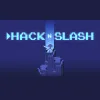Take a look inside 4 images
Hack 'n' Slash
Pros: Players powerfully, meaningfully manipulate objects and methodically hack the game's world.
Cons: Later stages of the game are pretty convoluted and easily overwhelm.
Bottom Line: A great intro to variables and how algorithms work, this game would shine as a supplement to a larger unit on programming.
Teachers would do well to include Hack 'n' Slash as a complement or supplement to introductory computer science or game design courses. The beginning of the game provides contexts for thinking about simple variables and how to manipulate them to change the behavior of different game objects. Instruction about variables, programming logic, etc., could be interspersed with gameplay to reinforce one another and give examples of how they work.
Playing the game takes several hours, though, so it may be best suited for a longer unit or as homework. Students are likely to get stuck toward the latter stages of the game, so it may be good to cultivate a sharing culture of tips and tricks and to provide time and space at the end of the unit to help students troubleshoot their way to the game’s ending.
Double Fine's Hack 'n' Slash is a commercial game that does a wonderful job of being educational. Think of it as similar to the older top-down Legend of Zelda games, except instead of a sword to combat enemies, the protagonist and her faithful sprite Niva use a USB stick to plug into and hack various objects in the game world. The player can manipulate variables: For example, players can switch a monster object to friendly from unfriendly, so it no longer attacks the player.
As with the Zelda games, Hack 'n' Slash slowly introduces players to new skills and abilities through the introduction of new magic items. One of them sets the rate of regeneration of health during a day, while another lets players change how quickly the day/night cycle changes. Combining these two helps make the player feel sort of like Neo in The Matrix, changing the game world itself to give the protagonist "superpowers." Other magic items expose the programmed behavior of objects in the game, allowing players to manipulate them in more and more complex ways, culminating in a memorable boss fight that threatens the existence of the game itself!
Hack 'n' Slash’s slow intro to object manipulation is emblematic of good scaffolding, at least in the earlier parts of the game. When players first discover they can change blocks so that they're movable, it feels super empowering, and that feeling only increases with each new expansion of power eclipsing the previous layer. By the end, players are exposed to the basic underlying language of the game and can negate any obstacle if they know where to find and manipulate its programmed behavior. It's an excellent way to show students how code underpins the games they love to play.
Unfortunately, toward the end of the game, this expansion of power can become overwhelming. There are so many sets of code to look at that it becomes difficult to sort out which ones are relevant to the current challenge. At this point, it helps to either seek assistance through online forums or stop playing for a while to give solutions some time to surface in the player's mind.












